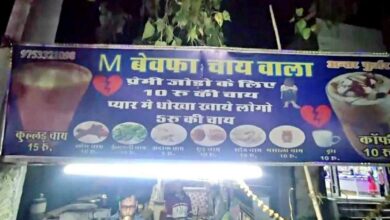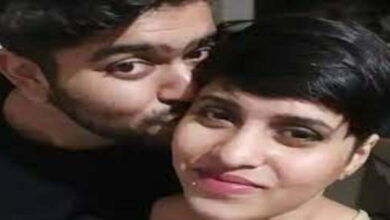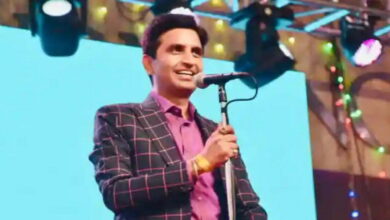Faith question again in court

A big question of faith is again in the court. Earlier, the Ayodhya matter had gone on in the court for decades and then one side had been saying for a long time that it was a matter of faith, in which the court could not decide. Since then so much water has flowed in Saryu and Ganga that now no one is saying that Shivling is a question of our faith and the court cannot decide on it. The courts have to settle the question of faith whether there is a Shivling or fountain in the premises of Gyanvapi Masjid and whoever has the claim over that structure.
The answer to this question may resolve a dispute that has been going on for centuries, end a litigation, or start a new one. Then it will not be very easy for the court to settle it. On the one hand, there are claims being made on the basis of religious and mythological stories and five hundred years old history, on the other hand there is a constitution and system of law adopted in the modern nation state.
Since the trial is also in the lower court of Varanasi, Allahabad High Court and also in the Supreme Court, therefore, the main consideration should be from legal aspects but before that some other things need to be discussed. Like this is not a new controversy and one day it was bound to happen. There is an old belief that if a gun is seen hanging on the wall in the first scene of a play, then it will definitely go on till the third scene. So, if during the Ayodhya movement the slogan was raised that Ayodhya is a tableau, Mathura-Kashi is left, then it was certain that one day the issue of Mathura and Kashi would arise.
That day has come. The dispute has started after the order on the kind of petition in Kashi, similar petition has also been filed in Mathura. The case of Kashi and Mathura is more direct than that of Ayodhya. It was to be proved in Ayodhya that Lord Rama was born at the same place where the Babri Masjid was. But there is no need to prove anything like this about Kashi Vishwanath Temple and Vrindavan Temple. Direct does not require proof. The written history of both these temples is that Muslim invaders and later rulers also demolished them and built mosques on their walls. It is also visible so it cannot be hidden.
Only then, by law, its decision should have been taken by now. If the matter of Kashi and Mathura were settled along with Ayodhya, the chances of enmity between the two largest sects would have been reduced a bit. The question is, how would this matter be handled? Had the Muslim society accepted the apparent reality and renounced the claim on both the mosques while respecting the faith of the Hindus, then those who cut old wounds would not have got a chance. Keep in mind that after the end of apartheid policy in South Africa, the Reconciliation Committee was formed, in front of which white people apologized to blacks for their excesses, laws were changed, many affirmative actions were started so that the brotherhood between the two groups was restored. .
The message of the entire campaign was that it is not a bad thing to apologize for mistakes or excesses that have happened in the past. After all, to this day Britain is apologizing to countries around the world for its excesses. Statues of many people promoting apartheid and slavery are being brought down around the world. Here the Muslims were not to apologise, but had to hand over their holy shrine to the Hindus in good faith. For them these are two ordinary mosques but for the Hindus Kashi and Mathura have great religious, spiritual and cultural significance.
It can be said that handing over two or three holy shrines does not stop the matter, why such a demand would have arisen regarding other religious places. Many Muslim scholars have said that the RSS has a list of 50,000 mosques they claim. With this argument one can go even further back in history and claim that many Hindu shrines were built by destroying Buddhist shrines, then Hindus should give up their control over them. It can also be said that the Aryans who came from outside destroyed the Vedic structure and built their architectural structure on them. But such arguments will lead to no end to this controversy. Because in every period of history, attackers and conquerors have targeted the women of the defeated nation, their property and their shrine. It cannot be avenged after centuries.
A line has to be drawn to settle such disputes and that line was drawn in India in 1991. In India, the Dharmasthala Kannu was made in 1991, which states that the status of the shrine as it was on 15 August 1947 will be maintained. In this the Babri Masjid was left as an exception. On the basis of this law, the Muslim community is claiming that Kashi and Mathura or any other religious place cannot be tampered with. But do they not know that the things written in the constitution or law are not final? The Narendra Modi government at the Center has abolished one and a half thousand laws made during the British era and in 75 years after independence, the constitution has also been amended more than a hundred times. Remember, in 1991, when the Dharmasthala Act was being passed, the BJP was a party with 120 MPs and opposed it. Right now BJP has majority in Parliament and what if it changes this law? Many Hindu leaders like Subramanian Swamy are calling the Narendra Modi government anti-Hindu on the ground that his government has not yet abolished the Dharmasthala Act.
However, as long as it is a law, the courts and governments will have to act accordingly. If the court decides according to that law, then the law will prevail over the faith. Even after the Shivling of the structure found in the Gyanvapi complex is certified, its present condition cannot be changed. So, this is a catch-22 situation. The court should find some way out of balance or the government should intervene and change the law. Apart from this, one way is that there should be a goodwill meeting between the two communities and a way out is found by mutual consent. In order that the agenda of those who do politics on this should not be successful, it is also necessary that the religious leaders and spiritual leaders of both the communities should find a way out of mutual dialogue.






